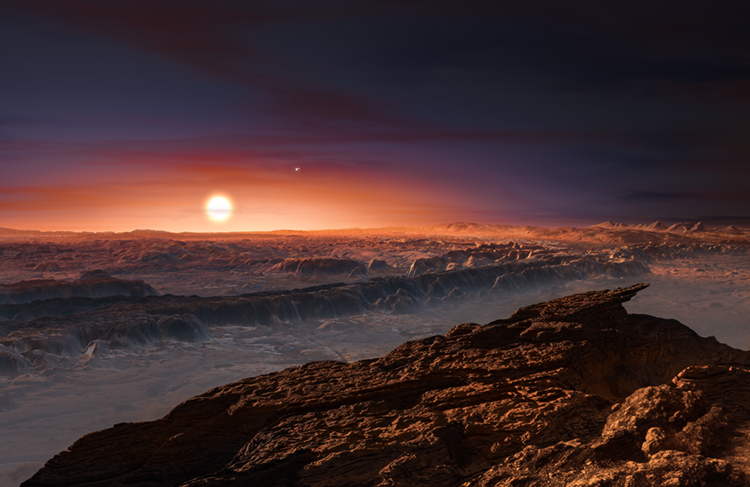Current Events Lesson Plan: August 18-31, 2016
Current Event: The Pale Red Dot: Proxima b
Scientists recently discovered an extrasolar (beyond our solar system) planet, or exoplanet, that may harbor conditions favorable to life. This exoplanet, called Proxima b, orbits Proxima Centauri, the star closest to the sun. Proxima Centauri, which is part of a three-star system called Alpha Centauri, is a red dwarf star. Proxima b is a roughly Earth-sized planet, which orbits Proxima Centauri every 11 Earth days. (Mercury, the closest planet to the sun, completes a year every 88 Earth days.) If Proxima Centauri were a star like our sun, the planet would be little more than a charred husk. But red dwarfs are small and relatively cool. Consequently, it is possible that liquid water could exist on the exoplanet’s surface. Because red dwarfs make up about 70 percent of the stars in the universe, if red dwarf stars can harbor habitable worlds, then the odds that life exists elsewhere in the universe increase significantly. Most exoplanets are too far away to be explored by spacecraft from Earth. However, a private initiative called Breakthrough Starshot has proposed sending a probe to the planet but does not anticipate launching the spacecraft for at least another 20 years. Nevertheless, there is hope that the planet can be explored close-up before 2100.

This artist’s impression shows a view of the surface of the planet Proxima b orbiting the red dwarf star Proxima Centauri, the closest star to the Solar System. Credit: ESO/M. Kornmesser
Objective:
A planet is a large, round heavenly body that orbits a star and shines with light reflected from the star. Our solar system has eight known planets and five dwarf planets, including Pluto, which used to be classified as a planet. Since the 1990′s, astronomers have discovered many planetary systems around distant stars. The distant planets, called extrasolar planets or exoplanets, cannot be seen directly. But they can be studied indirectly, through small changes they cause in light coming from the parent star. The Behind the Headlines news story and related World Book articles explore planets and other astronomical topics.
Words to know:
Discussion Topics:
1. Alpha Centauri is a multiple star system in the constellation Centaurus. Ask your students to name other constellations. (There are 88 commonly recognized constellations, including Andromeda, Aquarius, Aries, Cancer, Canis Major, Canis Minor, Gemini, Leo, Libra, Orion, Pisces, Sagittarius, Southern Cross, Ursa Major, Ursa Minor. Note, the Big Dipper and Little Dipper are not constellations, but smaller parts of constellations.)
2. Ask your students to debate “One day we will find intelligent life on another planet.”
3. Private companies have begun launching people into space. Ask your students if they would want to visit another planet or any other celestial body. Assuming they could safely travel anywhere in space, where would they go? Would they go if they knew they could never return to Earth?
4. Ask your students to use World Book’s Timelines feature to view or add to the Advances in Astronomy timeline. (Students may wish to use World Book’s “Astronomy” article for help.)


